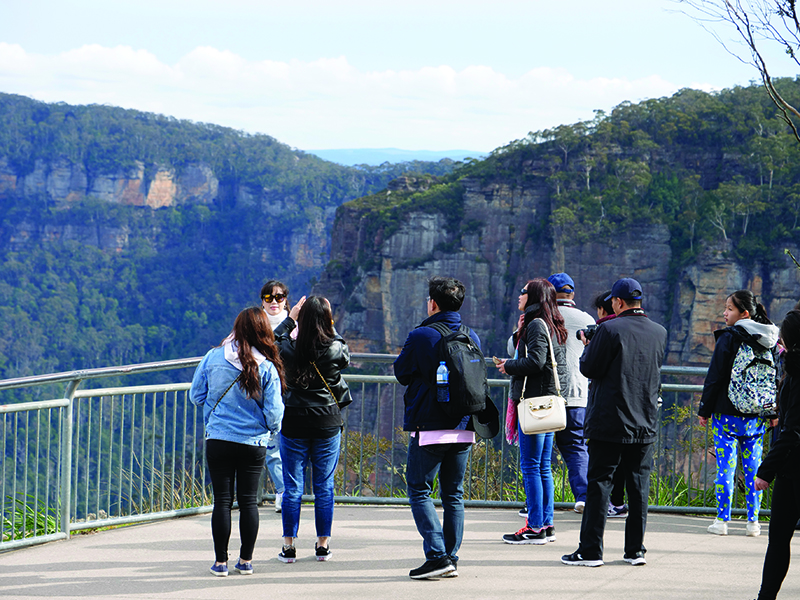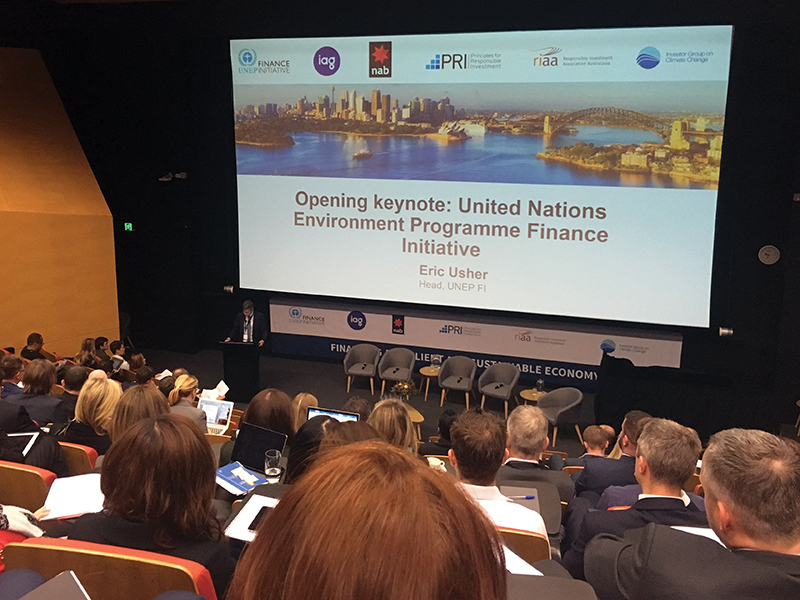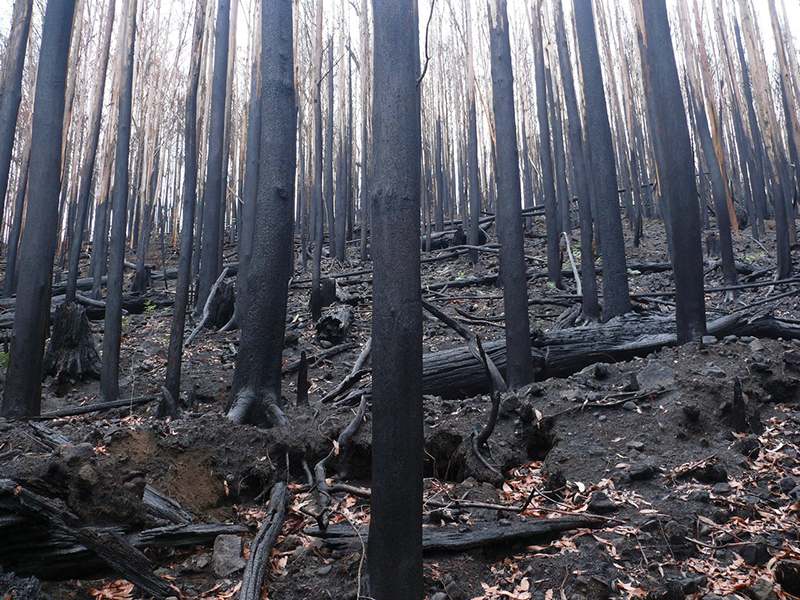
Natural capital brings biodiversity to business
Tuesday, 30 June 2020Environmental risks are increasingly recognised as risks to business. While climate change, water and waste top the list of concerns across the private sector, there is growing awareness among business leaders of the essential contribution of biodiversity to economic and social prosperity. Natasha Cadenhead and Rachel Morgain explore how natural capital is making its way into the boardroom, and how hub research can help businesses make better decisions.
As a global community, we have agreed to strive for a better and more sustainable future for all, through the signing of international conventions like the UN Sustainable Development Goals, the Paris Agreement on climate change, and the Aichi biodiversity targets. Given the scale of these goals and the amount of money required to achieve just the first two (US$6.9 trillion, according to the UN and World Bank Group), governments alone cannot enact these changes.
There is growing recognition that working across sectors is vital to creating a sustainable future, and that private industry can play a critical leadership role. For the private sector, reducing environmental impacts and undertaking positive environmental measures have three powerful drivers. Inaction carries potential reputational costs, financial risks and risks of legal liability. As consumers become more active in demanding environmentally and socially responsible products and services, businesses worldwide are increasingly interested in, and pressured to act on, sustainable practices. No longer can environmental strategies merely sit on top of business-as-usual. Increasingly, this entails developing the measures and tools to integrate environmental and social considerations across every aspect of a business. Nor is this primarily driven by brand differentiation or even reputation. 
Leaders from the Australian and New Zealand finance sectors at the conference that launched the Australian Sustainable Finance Initiative in July 2018. Image: Rachel Morgain
The World Economic Forum has consistently named climate change as the most likely and potentially most costly risk to business globally. Biodiversity loss now follows close behind, among the top 5 globally significant risks to businesses. This goes well beyond nature-based tourism. From pollination, to fisheries, and soil and water regulation to flood and fire mitigation, biodiversity and biodiverse ecosystems provide critical and often under-recognised ecosystem services to our entire economy.
Legal and policy instruments such as the global Taskforce on Climate-related Financial Disclosures are driving the rapid integration of climate-related risks and impacts into business decisions. Accounting for the vital contribution of biodiversity and ecosystems to business is a greater challenge, but the inception of the Natural Capital Protocol in 2016 offers a decision-making framework that helps businesses identify and value their impacts and dependencies on nature.
Natural capital is the world’s stocks of natural assets – including geology, soil, air, water and biodiversity – from which humans derive a wide range of benefits that make human life and society possible. The services that natural capital provisions to the global economy are valued at almost twice the global GDP (~$125 trillion/year compared to $75 trillion/year of GDP). Natural capital accounting helps businesses integrate this knowledge into decisions about where their activities and investments should be directed – for example, where nature is enhancing the value of assets for investors, or reducing risks assessed by insurers.
Hub research in the montane ash forests in the Central Highlands of Victoria highlights the interplay of natural capital across a biodiverse ecosystem. Environmental accounts identified tourism, for which these forests are a drawcard, as contributing 20 times more value to the economy than logging. These tall trees, and the wildlife they support, are thus worth much more when left in place than the timber they would yield if logged. But more than this, there is evidence that intact ecosystems that support rich biodiversity can also deliver more ecosystem services. Water catchments in these forests support 5 million people in Melbourne, with a value of over $300m per year, and deliver clean water to farmlands through the Goulburn-Broken system. Human disturbance from logging is increasing pressure on these catchments. Logging in the Thomson catchment alone has reduced water yields to Melbourne by an amount equivalent to the consumption of 250,000 people. Natural capital accounting highlights these economic dependencies on services provided by intact ecosystems, generating incentives for investors to protect these systems and their biodiversity. 
A previously logged area of mountain ash forest following Black Saturday fires in 2009. Areas subject to human disturbance were more vulnerable to the fires. Image: David Blair
Of course, as businesses take steps to mitigate their exposure to climate risk, they are increasingly understanding that biodiversity risk is also intimately related. The recent fires in south-eastern Australia are a stark reminder of the risks. In the Central Highlands, the consequences of fire across these landscapes – for humans and wildlife alike – were already seen to devastating effect in 2009. This risk of fire is growing, as climate change leads to hotter, drier conditions. Logging compounds this vulnerability, with fires spreading more rapidly and burning hotter in disturbed and young regrowth forests. Fire and logging in turn accelerate the loss of carbon from the system. Older, intact parts of the forest, which support more of the forest’s ancient trees and unique wildlife, are thus also more resilient to fire risk.
Predictive systems can model how human disturbance and climate variability interact in such ecosystems, with vital consequences for human life and wellbeing, but also for business decisions. Business leaders, insurers and investors seeking to mitigate these risks are beginning to integrate a better understanding of these dynamics into their decision systems. In 2018, leaders from Australia’s finance sector agreed to launch the Australian Sustainable Finance Initiative, an industry collective of banks, super funds, insurance companies, peak bodies and academics working to create a roadmap for sustainability in finance. This could be a game-changer, with decisions underpinning how investments flow and how risks are managed across every other sector.
By accounting for their impacts on nature and how they rely on nature for prosperity, natural capital and sustainability measures encourage business decision-makers to value the true wealth that nature brings to their business. But the biggest barrier businesses report in seeking to integrate biodiversity into their decisions is access to appropriate tools, data and knowledge. Biodiversity research is thus vital in enabling the implementation of these measures. This role for research is only likely to grow, as more industries seek to integrate nature into their fundamental decision-making.
Further information
Natasha Cadenhead - natasha.cadenhead@unimelb.edu.au
Business-Biodiversity Research Webinars
Building on our hub’s Conservation Opportunities event in 2017 and the growing interest across the private sector in biodiversity tools for business decisions, the Threatened Species Recovery Hub will be holding a Business-Biodiversity Research webinar series in July 2020. This will bring together industry speakers and researchers to discuss key developments in integrating biodiversity into business decisions.
The webinars will feature perspectives from Australian industry leaders who are integrating natural capital and sustainability thinking into Australian business. Speakers will explore the nature of biodiversity and ecosystem risks to businesses, natural capital accounting, tools for measuring and assessing impacts, and forecasting biodiversity risks and opportunities.
But biodiversity research is not just about managing risk. The full value of nature for business is only just beginning to be recognised. From biodiverse carbon to ecotourism, nature is increasingly being seen as one of our greatest assets for achieving prosperity.
Biodiversity is being integrated with production for more resilient landscapes. The series will also look at new opportunities for integrating biodiversity and economic prosperity.
For more information or to attend the summit:
Rachel Morgain - rachel.morgain@anu.edu.au
Top image: More than 2 million tourists visit the Blue Mountains in New South Wales each year to admire its natural values. Tourism is one of the most important employers in the Blue Mountains Local Government Area, where it directly contributes almost $200 million annually to the Gross Regional Product of the region, according to 2011 Census data. Image: Jaana Dielenberg